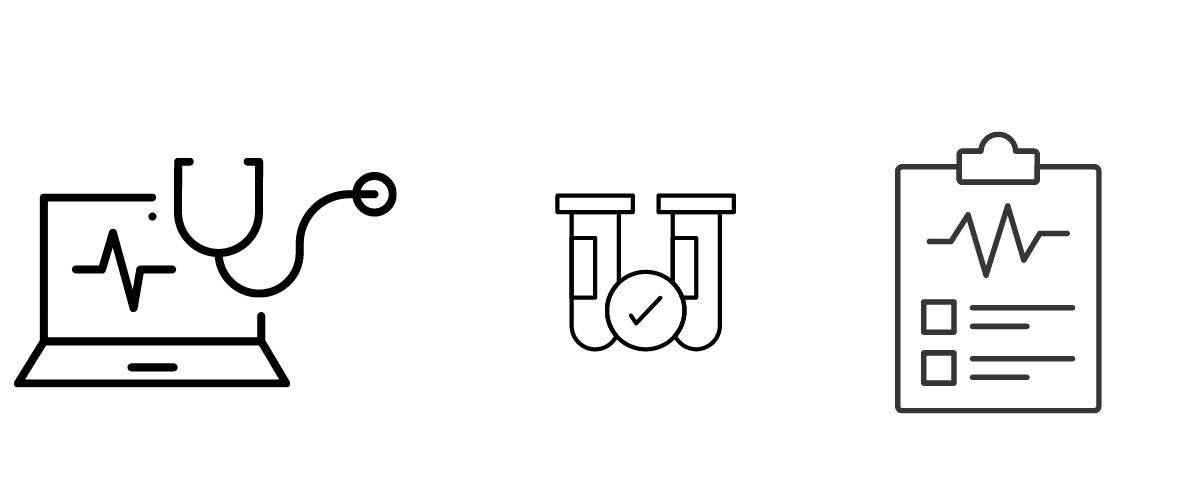
When it comes to scientific experimentation, there’s no one-size-fits-all. Every discipline has its own needs, and every scientific study requires a special combination of equipment, supplies, and procedures.
For example, in a diagnostic lab, where sanitation and security are crucial, there will be special considerations that would not exist in other laboratories.
At OnePointe Solutions, we’ve handled all kinds of laboratories. We’ve worked alongside some of the greatest minds, and we’ve created gorgeous, functional lab spaces for a multitude of different disciplines.
We know what it takes to make a laboratory that works and functions as beautifully as it looks, and we take great pride in what we do.
We also love to keep prospective remodelers in the loop. We’ve covered a little bit of everything, — from designing a cosmetic testing lab to avionics engineering — and today we’ll be covering how to design a diagnostic lab.
If you’re currently looking to remodel your diagnostic laboratory, then this is where you need to be! Follow along with us as we explain how the amazing minds at OnePointe Solutions think when we’re designing a new facility.
What Is a Diagnostic Lab?
The first thing that a laboratory design expert needs to consider is the laboratory’s function.
A diagnostic laboratory is a highly specialized scientific space. Within one of these amazing laboratories, scientists focus on testing blood, cholesterols, triglycerides, urine, and other bodily substances.
The end goal is — as the name implies — diagnosis.
Researchers are looking for signs of disease or mutations, and those red flags allow them to determine whether or not someone has a disease.
What Is the Importance of a Diagnostic Lab?
In addition to diagnosing illnesses, many of these laboratories will also perform research aimed at curing diseases. Tests will be performed on specimens to determine how they react to certain treatments.
The results of these experiments are given to the broader scientific community, who use the information to develop new cures, medicines, and treatments.
Lately, thanks to COVID, diagnostic labs have been seeing a massive increase in use and research. With the number of unique variants and new information that scientists are uncovering, diagnostic laboratories have become some of the most important research spaces in the world.
How to Design a Diagnostic Lab
Once our team knows what the laboratory will be used for, it’s time to start designing.
Much like scientific research, the design process is a complex series of steps. The designers at OnePointe Solutions must consider many different data points, including:
- Access to safety equipment
- Available space
- Functional layout
- Multifunctionality
- Permanent equipment
- Room layout
- Secure storage
- Security
Creating a Sterile Environment
Because of the sensitive nature of diagnostic laboratories, these spaces must be ultra-clean. Germs cannot permeate these spaces, and what happens within a lab should not be allowed to exit it.
This means that many diagnostic labs are classified as clean rooms.
What does this mean for designers?
It means that their first task is to consult with an HVAC expert. With their help, the designer will be able to understand what sort of limitations they’ll be working with, as clean rooms require an extensive network of special HVAC equipment.
Creating a Safe Environment
The intersectionality of laboratory design doesn’t end with HVAC!
Because of the highly sensitive and often contagious nature of diagnostic laboratory materials, designers will also need to connect with the building’s security. They’ll need to understand how access is granted within the building, and they’ll need to plan for the inclusion of one or more biosafety cabinets.
When it’s time to start building, contractors and construction workers will also need to be able to enter and exit the building as necessary.
Other safety considerations will revolve around basic operational procedures. Proper fume hoods will need to be installed, and plumbing is necessary for emergency showers and eyewash stations.
Designers must be extremely strategic at this stage to ensure a truly safe working environment. Someone working at the opposite end of the room should be able to access an eyewash station as quickly as the person standing next to it.
Moreover, safety stations must be arranged in a way that guarantees they will never be obstructed.
What Goes Into a Diagnostic Lab?
Once all of the essential safety and functional necessities have been addressed, designers begin working on what makes a lab a lab.
What Equipment Is Used in a Diagnostic Lab?
One of the biggest considerations for any laboratory is storage.
To make sure everything is accounted for, designers must take a closer look at the day-to-day operations of a laboratory. Within a diagnostic lab, there will be plenty of large, immobile machines.
These devices are not frequently (if ever) moved, and their placement must be carefully considered. Examples of large diagnostic equipment are:
- Autoclaves
- Blood bank analyzers
- Clinical chemistry analyzers
- Computers and desktops
- Chromatography equipment
- Hot air ovens
- Mass spectrometers
- Ultra-low freezers
Once the designers figure out the most appropriate place to set up these machines, they’ll consider the smaller details. In addition to beakers, petri dishes, and test tubes, diagnostic laboratories also have plenty of portable equipment that must be stored, such as:
- Centrifuges
- Hotplates
- Incubators
- Microscopes
- Urinalysis machinery
- Various analytical instruments
All of these items will need somewhere to go when they aren’t being used. While some desks will come with built-in storage, most of these items will ultimately be relegated to custom-designed casework.
Working with a diagnostic laboratory adds an extra layer of complications, as designers must also consider the sterile environment. For this reason, medical-grade casework will often be used in these environments. Cleanroom casework is also a worthwhile option to consider.
Designing Functional Workspaces
Once the cabinet layout has been determined, it’s time to consider where the scientists will work.
Designers will often begin by addressing the immobile aspects of a laboratory. Countertops and laboratory islands are high priority and heavy traffic workspaces, which means they’ll need to be strategically placed.
For more specialized applications, designers will employ highly individualized and custom-built scientific furniture, such as:
- Anti-vibration balance tables
- Custom-built mass spectrometry stations
- Microscope tables
- Mobile FLEX tables
Depending on the layout and available space within a diagnostic laboratory, designers will also need to consider a variety of other workspaces. Some labs will have a large room, within which scientists must perform tests and record results. In these situations, the OnePointe Solutions designers will employ functional dividers and partitions to safely separate these workspaces.
Need Help Designing Your Diagnostics Lab?
At OnePointe Solutions, our amazing designers have worked with plenty of disciplines and laboratory owners, and we’ve turned drab labs into fully functional research spaces of the future. Our results speak for themselves, and we’re backed by plenty of enthusiastic clients.
If you’re ready to upgrade your laboratory, then it’s time to get in touch with us. Request a quote today, and let’s create something amazing together!


